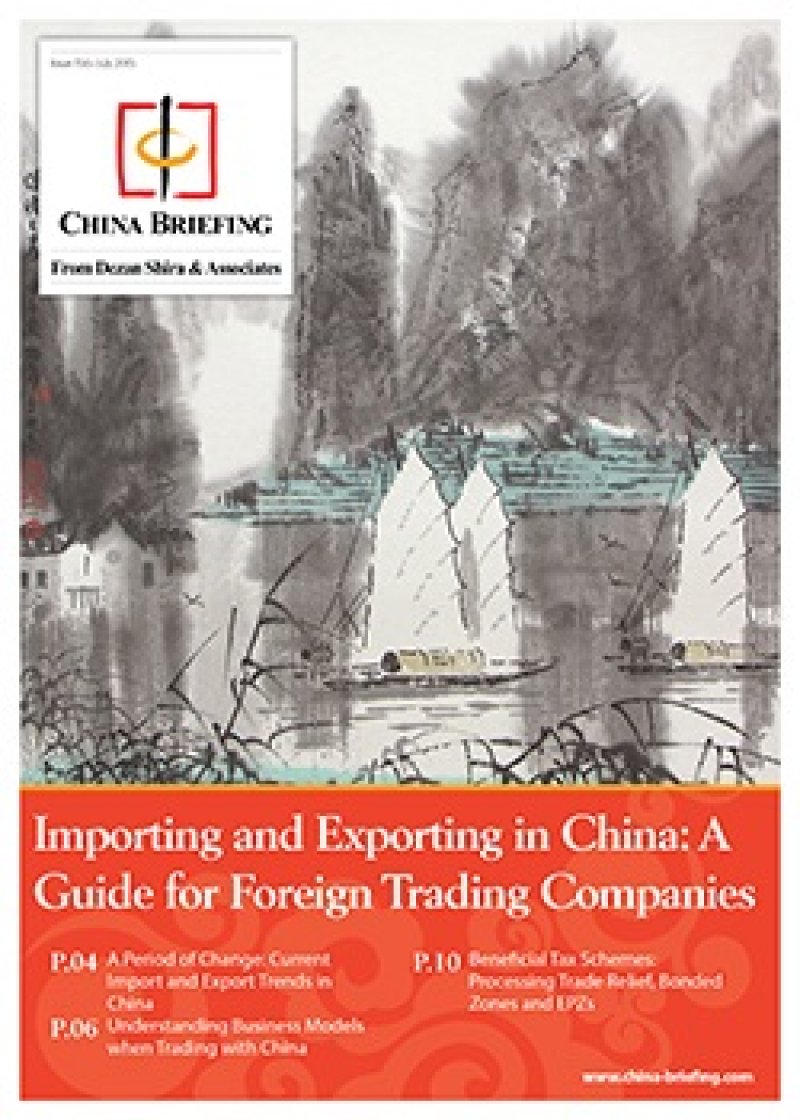Logging In: Understanding e-Commerce in China
By Dezan Shira & Associates
Editors: Jake Liddle and Qian Zhou
China is currently experiencing huge growth in its e-commerce industry. Online shopping, the most powerful engine of China’s e-commerce market, posted a 96.9 percent increase in the year 2010 and has continuously been gaining momentum since. In 2015, China’s online retail transactions reached RMB 3877.3 billion (US$622.5 billion, an increase of 33.3 percent over 2014), accounting for 12.9 percent of total social retail sales. By 2020, China’s e-commerce market is predicted to be larger than those of the U.S., the UK, Japan, Germany, and France combined.
Consumer analysis
These predictions are linked to the number of people currently connected to the Internet in China, be it via computers or smartphones – by the close of 2015, there were 688 million Internet users in the country. According to data from the China Internet Network Information Center, the number of online shoppers topped 413.3 million in 2015, accounting for 60 percent of all internet users. By 2020, 750 million Chinese are predicted to shop online. One clear trend that cannot be ignored is the increasing popularity of mobile devices: the number of mobile shoppers reached 339.7 million in 2015, with the amount of mobile owners shopping online rising from 42.4 percent to 54.8 percent year-on-year.
Among these online customers, the largest segment is the young and well-educated with a high value of purchasing power. In 2015, men made up 57.1 percent of online shoppers, surpassing women by 14.2 points, with those aged 20-29 the most prominent. Meanwhile, college graduates represent 74.2 percent of online shoppers.
![]() RELATED: Information Technology-based Solutions
RELATED: Information Technology-based Solutions
Main players
China’s e-commerce market is dominated by domestic platforms. Two of the biggest players – Tmall and JD – control 57.7 percent and 25.1 percent of the market, respectively. Other players such as Suning, Vipshop, Gome, Yihaodian, Dangdang, Amazon and JMei share the remaining 17.2 percent.
Cross border e-commerce
China’s cross border e-commerce sector has also been experiencing exponential growth. According to data from China’s e-commerce research center, cross border e-commerce transactions in China reached RMB 2 trillion in the first half of 2015, representing 17.3 percent of China`s total import and export trading volume. Based on a global trade pattern report released by the Ministry of Commerce (MOFCOM), China’s cross border e-commerce transactions will increase to RMB 6.5 trillion by the end of 2016.
It therefore comes as little surprise that, with China’s traditional import and export market shrinking, the government has released several preferential policies aimed squarely at boosting cross border e-commerce. The State Council of China officially announced its plan to establish a “Comprehensive Pilot Zone of Cross Border E-Commerce” in Hangzhou in March 2015, featuring a slew of preferential tax policies and streamlined customs clearance procedures. Following the success of the Hangzhou Pilot Zone, the State Council further decided to expand the program to 12 new cities: Shanghai, Guangzhou, Tianjin, Chongqing, Hefei, Zhengzhou, Chengdu, Dalian, Ningbo, Qingdao, Shenzhen and Suzhou.
For more information about China’s e-commerce market, including graphs on the number of online and mobile shoppers in China and the online shopping market penetration rate, please download the latest issue of China Briefing Magazine, titled “China Investment Roadmap: the e-Commerce Industry.”
 This article is an excerpt from the March issue of China Briefing Magazine, titled “China Investment Roadmap: the e-Commerce Industry.” In this issue of China Briefing, we present a roadmap for investing in China’s e-commerce industry. We provide a consumer analysis of the Chinese market, take a look at the main industry players, and examine the various investment models that are available to foreign companies. Finally, we discuss one of the most crucial due diligence issues that underpins e-commerce in China: ensuring brand protection. This article is an excerpt from the March issue of China Briefing Magazine, titled “China Investment Roadmap: the e-Commerce Industry.” In this issue of China Briefing, we present a roadmap for investing in China’s e-commerce industry. We provide a consumer analysis of the Chinese market, take a look at the main industry players, and examine the various investment models that are available to foreign companies. Finally, we discuss one of the most crucial due diligence issues that underpins e-commerce in China: ensuring brand protection. |
![]()
 Internet Challenges & Solutions When Doing Business in China
Internet Challenges & Solutions When Doing Business in China
In this special edition of China Briefing magazine, we highlight how and why foreign companies will be negatively affected by China’s internet, and provide methods to help solve these problems. We discuss ISP selection, internet connection types, CDNs and VPNs, and internal control systems. Finally, we examine the importance of network security in China and how it can help augment a company’s internet connection.
Importing and Exporting in China: a Guide for Trading Companies
In this issue of China Briefing, we discuss the latest import and export trends in China, and analyze the ways in which a foreign company in China can properly prepare for the import/export process. With import taxes and duties adding a significant cost burden, we explain how this system works in China, and highlight some of the tax incentives that the Chinese government has put in place to help stimulate trade.
 Selling, Sourcing and E-Commerce in China 2016 (First Edition)
Selling, Sourcing and E-Commerce in China 2016 (First Edition)
This guide, produced in collaboration with the experts at Dezan Shira & Associates, provides a comprehensive analysis of all these aspects of commerce in China. It discusses how foreign companies can best go about sourcing products from China; how foreign retailers can set up operations on the ground to sell directly to the country’s massive consumer class; and finally details how foreign enterprises can access China’s lucrative yet ostensibly complex e-commerce market.
- Previous Article China Launches New “Three-in-One” Business License
- Next Article Case Study: Commercial Contract Examination and Advisory in China




























